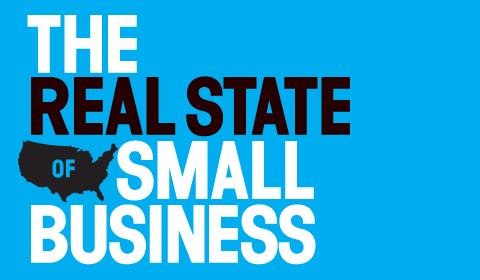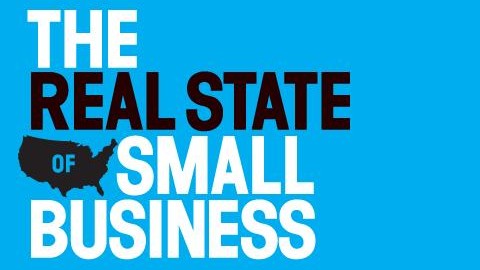Have you noticed the tried-and-true marketing advice and forms of marketing that you’ve employed are rapidly losing their luster? People aren’t responding. Prospects are harder to find. Customers are tuning out.
Therein lies your problem …
You played it safe. You thought you could get away with merely doing what’s tried-and-true, what’s tested, proven, safe.
The reality is: what’s proven has already been done. As priceless as those lessons are, the standard way of executing them is yesterday’s news.
I mean, you may have noticed some of your fellow business owners are getting just a little bit fed up lately.

That dissatisfaction comes from one of the biggest problems for small business owners—having too many answers (especially those that are tried-and-true.)
In fact, they often have so many answers, they can’t stay focused on any one thing long enough to know if it’s THE answer.
If you’re trying to grow your business, you may have joined them. You might be tired of the moving target that marketing presents. You might be annoyed at what the so called “social media experts” seem to say that makes your job worse, not better.
So, as a business owner, what in the world can you do to grow to your business?
The solution lies not in the right answers but by focusing on the right questions.
When you can focus on creating priorities through a framework of customer focused questions, the answers you need in order to create growth, or for that matter, strategy, campaigns and internal processes, will present and order themselves.
Below is the state of small business: what business owners need to know to grow. Seven questions that can help organize your priorities and create the answers you need to keep you locked in on growth.
1. How will people learn about our core point of differentiation?
Creating and communicating just how your business is different from everyone else that says they do what you do, make what you make, provide what you provide, serve what you serve is job number one. As you plan for growth you must know this difference and you must find all the touch points where this can be in front of an ideal target customer.
This typically takes the form of:
- Networking
- Online and Offline Advertising,
- Public Relations
- Referrals and
- Strategic Partnerships.
The key here is to discover what channel—online or offline— has your ideal customers permission (attention).
2. What will make them raise their hand?
It’s not enough to run an ad and think this will build the kind of trust needed to make a purchase. First off, if you only buy a 2 x 3 ad or send a 4 x 6 postcard, can you really tell your story very well? Use that space to draw one and only one action – the request for more information. You must have an entire education pipeline in place so that an ideal target customer can walk in and learn and experience how you’re different.
Often this step is achieved through content such as:
- Special Reports,
- Whitepapers,
- Workshops,
- Evaluations,
- Trail Products,
- Checklist,
- Newsletters,
- Courses,
- Tip Sheets,
- “How to” Videos,
- Blog Posts and
- eBooks.
This approach allows you to demonstrate your expertise in a non-threatening, on the ideal customer’s own terms, way.
3. What will lead them to give us permission to share our story?
This question really gets to the heart of the trust issue every business faces. The right to tell your story, what really makes you unique, is something that’s earned. This is also the place where your reputation is measured. Ideal customers that have come to this point are interested in what you do, now they need to learn how you do it in a way that relates with their values and beliefs.
Often, this includes:
- Reputation Management,
- Reviews,
- SEO,
- Content and
- Customer Stories
4. How can we offer proof that they can get the result they want?
It’s not enough to simply make a promise these days. You must find ways to demonstrate substantial proof that you can deliver a result. Case studies and customer testimonials are a great place to start, but no amount of explaining, documenting and outlining can replicate the conditions of actually experiencing a service or product in action.
This is the place where:
- Trial Offers,
- Evaluations,
- Workshops
- New Pricing Strategy called “freemium”
Can allow people to sample your brilliance in a lower risk form in order to make the decision to make a full purchase more easily.
That’s why I’ve always felt that the best way to effectively sell a service or product is to start by giving it away.
5. How can we make the buying experience fun, effective and convenient?
Once you understand that your best prospect is a current customer, you’ll need to go to work on reselling them.
One of the best ways to employ this is through a that includes:
- Attention – what we need from you next
- Education – how to contact us if you have a question
- Time – we’ll follow-up with a results review
It’s incredible how often those 3 things leads to referrals and word of mouth buzz.
6. What can we do to measure and ensure our customer gets the result they were promised?
Sometimes, through no fault of our own, a customer doesn’t get the result they had hoped for. There can be many reasons for this, but focusing on building a process of measurement is indispensable. This allows you to make things right if they were amiss or make things remarkable if they were just merely good, but it also allows you to highlight the value you bring to most customers.
Note: Use that as both proof and validation for raising your prices.
- Create a results review process and make it part of your growth plan.
7. What will lead every client to talk about us to their trusted circle?
This question could go on the front end of this post as one of the best ways to improve your business is to begin every client relationship with a referral in mind. At the very least, you must start to think in terms of moments of truth, or marketing touch points where you plant the seed for referrals.
One of my favorite places to do this is during the sales process. Tell every prospect that you know they are going to be so happy with the service or product and that they will want to tell others how they can receive this kind of experience as well.
Business Articles | Business 2 Community
(309)






